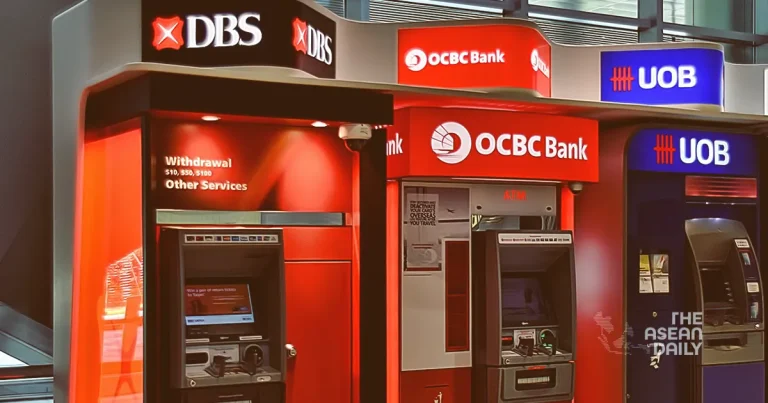21-6-2024 (SINGAPORE) The three largest banks in Singapore, DBS Group Holdings, United Overseas Bank (UOB), and Oversea-Chinese Banking Corp. (OCBC), are intensifying their efforts to establish themselves as regional powerhouses in Southeast Asia. Through strategic acquisitions and targeted hiring initiatives, these financial giants are extending their reach beyond the city-state’s borders, capitalizing on the growth opportunities presented by their neighboring markets.
During UOB’s annual general meeting in April, CEO Wee Ee Cheong articulated the bank’s ambitions, stating, “In the next five years, we target to further penetrate these ASEAN countries and thrive in the competition with the large domestic banks there.”
UOB’s regional expansion plans gained significant momentum in 2022 when the bank announced its acquisition of Citigroup’s consumer banking business in Thailand, Malaysia, Indonesia, and Vietnam. This strategic move added 2.4 million retail customers from Citi to UOB’s existing 2.9 million in the four countries. So far, UOB has completed the integration process in Indonesia, Malaysia, and Thailand, with Vietnam expected to follow suit next year.
Wee highlighted UOB’s aspiration to become the leading cross-border trade bank for ASEAN, citing the bank’s role in supporting the partnership between Chinese automaker BYD and Thailand’s Rever Automotive, which became BYD’s sales agent in Thailand in 2022. UOB has provided loans to more than 25 of Rever’s local dealers.
Not to be outdone, OCBC is also making strides toward becoming a regional banking powerhouse. In November, the bank announced the acquisition of PT Commonwealth Bank Indonesia, with plans to integrate the acquired entity into its existing subsidiary, OCBC Indonesia, the country’s eighth-largest bank. “This acquisition builds on our already strong presence in Indonesia,” said OCBC Group CEO Helen Wong in a news release in May.
OCBC, which also operates in mainland China, aims to support its clients’ expansion into Indonesia, Southeast Asia’s largest economy, through financing opportunities. “Rising ASEAN-Greater China [capital] flows is a focal point of Asia’s growth story and a big opportunity for us,” Wong stated.
Meanwhile, DBS, Singapore’s largest bank by assets, announced the purchase of Citigroup’s Taiwanese retail banking business in 2022, completing the transaction last August. This year, DBS bolstered its regional presence by hiring Edwin Tan, the former head of Credit Suisse’s high-net-worth business in Thailand, to oversee the bank’s operations in Thailand and the Philippines.
Currently, the three banks generate a significant portion of their revenue from Singapore, with the city-state accounting for 66.5% of DBS’s revenue in 2023, 61.9% for OCBC, and 56.7% for UOB, according to QUICK FactSet data. However, their regional footprint is gradually expanding, with UOB generating 11% and 10.6% of its revenue from Thailand and Malaysia, respectively, while OCBC had 11.3% from Malaysia.
Glenn Thum, a senior research analyst at Phillip Securities Research in Singapore, attributed the banks’ regional expansion efforts to the saturation of the domestic market. “The incumbent banks in Singapore are expanding into the region as Singapore’s population is becoming increasingly more saturated, with [the] majority of the population already having multiple bank accounts and banking relationships,” he told Nikkei Asia. Thum added that the recent acquisitions “would enable them to better synergize with the local markets and enable continued growth.”
External factors, such as the anticipated easing of monetary policies by central banks, including the U.S. Federal Reserve, have further catalyzed the banks’ overseas expansion plans. While higher interest rates boosted their earnings in 2023, the expected rate cuts in 2024 and beyond will likely force banks to lower lending rates, making it challenging to maintain profitability solely from domestic operations.
To mitigate these risks, the Singaporean banks are diversifying their revenue streams by venturing into the credit card business, asset management for wealthy individuals, and expanding their geographical footprint across Southeast Asia.
While expanding market share in countries like Thailand and Indonesia, where strong local competitors exist, will be a formidable challenge, Thum views the banks’ recent moves as “a positive sign for growth.” He noted, “With expansion into the region, the banks would be able to continue to grow their customer base and relationships, resulting in a higher top and bottom line.”




